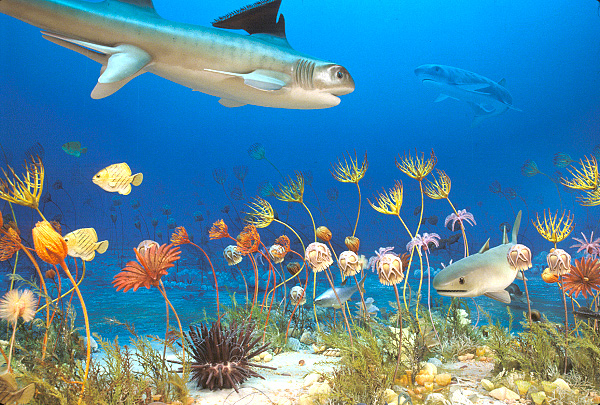
Illinois State Museum
354–323 Million Years Ago
Mississippian Period
During the Mississippian Period (354–323 million years ago), Illinois was 20 degrees south of the equator. The climate was generally warm. Shallow seas covered much of central and southern Illinois. Marine creatures flourished in these seas. Their fossils are preserved in limestone that formed at the bottom of the seas.
Geologists use names to identify layers of sedimentary rock. Layers that
have distinctive characteristics, occur over a wide area, and have recognizable
upper and lower boundaries, are named for localities where they are well
exposed. The locality is followed by the rock type as in “Burlington
Limestone.” If the layer contains several rock types, it is called
a formation as in the “Muldraugh Formation.”
Crinoid Meadow, 340 million years ago
During the Mississippian Period, shallow seas covered much of the midwestern and western United States. Thickets of marine animals called crinoids graced the sea floor. This reconstruction is based on the Early Mississippian Keokuk Limestone of Missouri, Iowa, Illinois, and Indiana, where more than 400 different types of crinoids have been described. This great diversity was possible because each crinoid species had different methods for capturing food.
Click on the Fossils icon below to see the many marine animals that lived during this period.